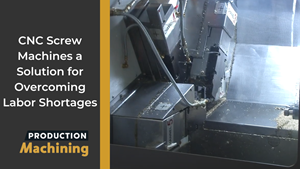Where Skills and Talent Come From
Each and every one of the students that participated demonstrated to me that they were qualified, thoughtful, skilled and competent practitioners in the field of Design, Analyze, Manufacture, Test and Perform.
Recently, I had a chance to see the future of our craft when I was asked to serve as a judge of the Pennsylvania State Championship of the Formula OneTM Technology Challenge (f1inschools.pitsco.com). I was surprised by the breadth and depth of skills displayed by the participants who were students ranging from fifth grade through high school seniors. I was even more delighted to see the joy, pride, professionalism and competency displayed by each and every student that competed.
The Formula One Technology Challenge involves a five-step process that meets the standards for technological literacy, the National Council of Teachers of Mathematics (nctm.org) and the National Science Teachers Association (nsta.org). The five steps are design, analyze, make, test and race. The Formula One Technology Challenge was to create and build a balsa racer that meets demanding specifications using CAD software, CAM software, CNC milling and testing for aerodynamics (virtual or actual). Competitors had to create documentation, make a verbal presentation, and of course, race their cars. Each group was also evaluated on their marketing, branding and sponsorship efforts.
I gleaned several lessons from the students’ entries. For example, changing from a 1/4-inch to a 1/8-inch ballnose cutter improves surface finish, but increases machining time. Testing data helped several teams demonstrate the reason for their choice of steel, ceramic and magnetic bearings or alternate means of attaching wheels. Several teams performed extensive tests to show the differences between steel, aluminum, DelrinTM and carbon fiber for axle applications.
The iterations that most teams worked through to improve their designs as they used the testing data from their wind tunnel and simulation testing were very impressive. In my opinion, the ability to not only obtain data, but to analyze that data, make inferences from that data, and then execute the needed changes was the greatest takeaway for the participants in this event.
Major industry support included Denford Products (hitechinc.us/denford—cadcamcnc.html) and 484 Consulting, LLC, whose CEO, Paul Koontz, chaired the Pennsylvania State Championships. HITechinc (hitechinc.us) sponsored the state event for Pennsylvania, and its president, Brian Haskell, coordinated the event. Synergis (synergis.com/home), the Autodesk software
distributor, provided $1,500 in award monies. Synergis’ Tim Varner led the engineering evaluations of the submissions.
Sixteen teams amounting to almost 100 students were on site in this competition. Five teams qualified to go to the National Championships. Pine Richland High School’s entry, “Predator Racing,” earned the state championship title. Elizabethtown Middle School’s “Ninja’s” entry took second place, and Donegal Middle School’s “Twisters” entry took third place, earning the teams trips to the Nationals. Manheim High School’s entry, “PA Hardcore,” took a second place, and North Lebanon High School’s entry, “AeroBreakerz,” took a third place, and also qualified them for the U.S. National competition.
Each and every one of the students that participated demon-strated to me that they were qualified, thoughtful, skilled and competent practitioners in the field of Design, Analyze, Manufac-ture (Make), Test, and Perform (Race). Imagine meeting a fifth grader who knows his drag coefficient to the fourth decimal place and understands what that means. Imagine meeting a graduating senior who has moved through positions as design engineer, manufacturing engineer, resources manager and team leader.
This event was as much about business as it was about racing. Imagine how many lessons each participant has mastered on how to contribute to a team, how to create digital designs, how to make inferences from data, how to get a machine to run, and how to solve whatever problems arise. These are skills that don’t just qualify them to become good manufacturing employees. These are skills that will ensure them the chance to become great leaders and managers in whatever field they choose. Let’s hope they choose to stay in manufacturing—precision manufacturing. Their smiles say that just might happen. See more photos on our blog at pmpaspeakingofprecision.com/2011/04/21/where-skills-and-talent-come-from/.
— Precision Machined Products Association
Related Content
Video Tech Brief: CNC Screw Machines a Solution for Overcoming Labor Shortages
CNC screw machines can exceed job shop productivity and enable manufacturers to overcome perpetual employment gaps.
Read MoreEmerging Leader's Problem-Solving Skills Cool Down a Hot Project
This 2023 Emerging Leader developed a product in response to a call for help from Yamaha that was a huge hit in the snowmobile industry when it hit the market in 2010. In fact, it is now a common product that most snowmobile OEMs have implemented.
Read MoreStrengthening Manufacturing Workplaces Through Active Listening
A good strategy to weather the storms of manufacturing market upheavals and unpredictable factors is to commit to continuous, active employee listening.
Read MoreRecognizing Signs of a Degrading Workplace Culture
Is your machine shop missing key “culture elements?” Here are ways to identify if your organization is heading in the right or wrong direction in terms of establishing a healthy company culture.
Read MoreRead Next
Seeing Automated Workpiece Measurement in Real Time
User-friendly inspection software for CNC machining centers was shown at IMTS 2024 monitoring measurements between and after machining while performing SPC based on recorded measurement values.
Read More5 Aspects of PMTS I Appreciate
The three-day edition of the 2025 Precision Machining Technology Show kicks off at the start of April. I’ll be there, and here are some reasons why.
Read MoreA Tooling Workshop Worth a Visit
Marubeni Citizen-Cincom’s tooling and accessory workshop offers a chance to learn more about ancillary devices that can boost machining efficiency and capability.
Read More
























